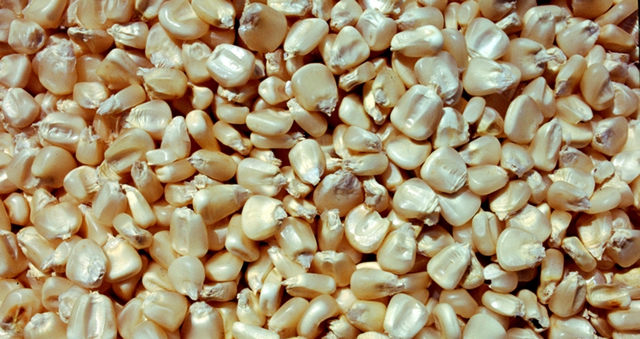Develop maize value chain

Conrad Mwanawashe Bumper Harvest
ZIMBABWE has vast tracts of arable land which must be put to use all year round.
One way that Zimbabwe could ensure that all the arable land is exploited throughout the year is by developing a maize-to-maize products value chain, through the Command Agriculture initiative.
The maize-to-maize products involves a number of players ranging from the farmer, seed producers, water suppliers, energy, agro processors, marketers and consumers.
Due to the importance of the maize-to-maize products value chain to Zimbabwe’s economic well being, we will devote a number of instalments to that in order to do justice to the sub sector.
This first instalment focuses on the issues related to the value chain in general, with future instalments focusing on specific areas such as seed and other inputs producers, agro processors, the role of the Grain Marketing Board and marketing of products.
Zimbabwe is expecting a bumper harvest this season and food self sufficiency within the next three years.
The introduction of the Command Agriculture initiative and the abundant rains that have been falling on the country is expected to see food production situation improving.
While this looks a good development for the country, it is critical to catalyse action related to the development of the maize-to-maize products value chain so that all the benefits of being an agro economy could be realised.
In pursuit of a coordinated approach to industrial development, the manufacturing sector’s representative body, the Confederation of Zimbabwe Industries, developed 18 value chains which, in their wisdom are key to industrial development.
The development of the value chains is also in line with the SADC Industrialisation Strategy and Roadmap in which the issue for value chains takes centre stage.
In that regard, the CZI produced a booklet titled: Value Chains Mapping of Value Chains in Zimbabwe for Economic Development, which assists policy makers in crafting policies that are relevant to every segment of the economy.
The value chains identified by the CZI include maize-to-maize products, diamond-to-jewellery-to-ornament; gold-to-jewellery-ornament; chrome ore-to-chromium-to-fabricated steel product; limestone-to-quarry-to-cement-to-construction; coal bed methane-to-gas-to-plastics and allied value chain.
Products and by-products under the maize-to-maize products value chain identified by the CZi include mealie meal, samp, maize rice, cornsnacks, cornflakes, maputi while intermediary products include starch paste, maize grit and maize bran.
Ancillary products include stockfeeds. The maize-to-maize products value chain is therefore critical to Zimbabwe’s industrialisation in as much as it touches a number of sub sector industries which are key to the economy.
Enhancing the maize-to-maize products value chain is critical for ensuring food self sufficiency and security in Zimbabwe. It is therefore, pertinent to interrogate key issues and opportunities surrounding the value chain.
For a number of years the problem in the maize-to-maize products has been at the farm level where productivity has been below expectations owing to a number of reasons which lack of finance to fund operations, commercial expertise in the running of the farming business, among others.
Also, a number of successive droughts affected productivity in the country.
But these challenges are being addressed through Command Agriculture which is assisting farmers with inputs, seed, fertilisers, among other initiatives.
Addressing challenges at the point of primary production will ensure that the maize-to-maize products are guaranteed.
As such, while looking at the primary production stage, there are opportunities available to both the private and public sectors.
For instance, CZI identified an opportunity for the introduction of new drought tolerant maize seed varieties to boost output in drought prone areas. Seed producers will shed more light on this in future instalments of the Bumper Harvest.
There also could be opportunities in introducing two maize crops per annum in some parts of the country under Command Agriculture.
This could increase business across the maize-to-maize products value chain as it could guarantee work for whole year. Again, it will ensure that food security is guaranteed.
But this calls for extensive investment in mechanisation and irrigation and in farmer training and technical support.
Water bodies will have to be increased in number or enlarged where possible so that supplies are guaranteed in the event that two maize crops per annum are introduced.
Managing the two-maize crops per annum project could be managed through Command Agriculture.
Having guaranteed maize throughout the year, there will be need to strengthen the link between farmers and markets.
Many other opportunities at farmer level are available for the private sector to exploit.
The Zimbabwe Farmers’ Union has seen opportunities at this level and is encouraging its members to consider formalising their businesses and engage in value addition so that they do not only focus on selling unprocessed products.
It could make economic sense for farmers to consider pooling resources together and start processing plants in their areas instead of just disposing of raw materials.
An Agriculture Value Chain Analysis undertaken by Chiukira Gideon and Sandra Juru titled: Maize and Soya Bean Value Chain Analysis, a few years ago, showed that a maize farmer can realise more than double per tonne, less operating costs, if the maize-maize-products value chain and value addition concept was adopted.
While focusing on the farmer, the primary producer, it is also pertinent to critically look at the role of technology in the maize-to-maize products value chain.
Technology ranging from implements used in farming, cultivation, harvesting and packaging and technical support is key for a successful agro economy.
For instance, stakeholders in the sector last week launched an application known as iFarm an access platform that links farmers to markets, seed houses, Government departments, insurance companies, agricultural bodies and farmers’ unions, agro processors, among others.
iFarm, a software application in English, Shona, and Ndebele intended primarily for smartphones and other smart devices, offers services that include access to product information, market information, accurate weather information, financial awareness/products and services, inputs, suppliers, pests and disease control and agronomy extension services, among other services.
These are some of the opportunities that arise in the maize-to-maize products value chain.
Feedback: [email protected]











Comments